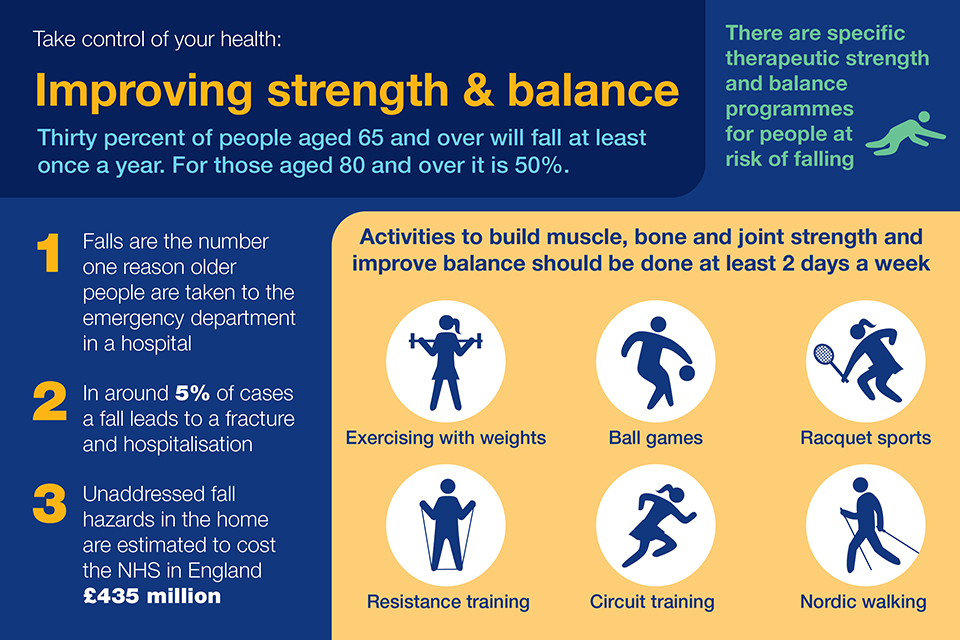Some Of Dementia Fall Risk
Fascination About Dementia Fall Risk
Table of ContentsA Biased View of Dementia Fall RiskFacts About Dementia Fall Risk RevealedThings about Dementia Fall RiskDementia Fall Risk for Beginners
A loss threat analysis checks to see exactly how most likely it is that you will fall. The assessment typically consists of: This consists of a series of questions about your overall health and wellness and if you have actually had previous drops or troubles with balance, standing, and/or walking.Treatments are referrals that might minimize your danger of falling. STEADI includes three steps: you for your threat of falling for your risk factors that can be enhanced to try to avoid falls (for example, equilibrium troubles, impaired vision) to reduce your threat of dropping by using effective strategies (for instance, supplying education and learning and resources), you may be asked several concerns including: Have you fallen in the previous year? Are you fretted regarding falling?
You'll sit down once more. Your supplier will certainly inspect how much time it takes you to do this. If it takes you 12 secs or more, it may suggest you go to higher threat for a fall. This test checks strength and balance. You'll sit in a chair with your arms crossed over your chest.
The positions will certainly obtain more difficult as you go. Stand with your feet side-by-side. Relocate one foot halfway onward, so the instep is touching the big toe of your various other foot. Move one foot completely in front of the other, so the toes are touching the heel of your other foot.
Rumored Buzz on Dementia Fall Risk
The majority of drops happen as an outcome of multiple contributing aspects; consequently, handling the risk of falling starts with determining the factors that add to fall threat - Dementia Fall Risk. Some of the most pertinent threat factors consist of: Background of previous fallsChronic medical conditionsAcute illnessImpaired gait and equilibrium, lower extremity weaknessCognitive impairmentChanges in visionCertain risky drugs and polypharmacyEnvironmental factors can also enhance the risk for falls, including: Poor lightingUneven or damaged flooringWet or unsafe floorsMissing or harmed hand rails and order barsDamaged or poorly fitted devices, such as beds, wheelchairs, or walkersImproper usage of assistive devicesInadequate guidance of the individuals living in the NF, including those who show hostile behaviorsA successful loss risk management program requires a detailed scientific evaluation, with input from all members of the interdisciplinary team

The treatment strategy ought to likewise include treatments that are system-based, such as those that promote a risk-free setting (ideal lights, handrails, get bars, etc). The efficiency of the interventions need to be evaluated periodically, and the treatment plan modified as essential to show modifications in the fall risk analysis. Applying an autumn danger monitoring system utilizing evidence-based finest technique can reduce the occurrence of falls in the NF, while restricting the potential for fall-related injuries.
The Basic Principles Of Dementia Fall Risk
The AGS/BGS guideline advises screening all adults matured 65 years and older for autumn risk every year. This screening contains asking patients whether they have actually fallen 2 or even more times in the past year or sought medical attention for a fall, or, if they have not dropped, whether they really feel unsteady when strolling.
People who have fallen as soon as without injury ought to have their equilibrium and gait reviewed; those with gait or equilibrium abnormalities should get added assessment. A history of 1 autumn without injury and without stride or equilibrium problems does not require further evaluation past ongoing annual loss danger testing. Dementia Fall Risk. An autumn risk assessment is called for as component of the Welcome to Medicare examination

Not known Facts About Dementia Fall Risk
Documenting a drops history is one of the quality indications for autumn avoidance and monitoring. copyright medications in particular are independent forecasters of drops.
Postural hypotension can commonly be reduced by decreasing the dose of blood pressurelowering drugs and/or stopping drugs that have orthostatic hypotension as a negative effects. Usage of above-the-knee support tube and sleeping with the head of the bed boosted may additionally reduce postural reductions in blood stress. The advisable components of a fall-focused physical evaluation are displayed in Box 1.

A TUG time greater than or More about the author equal to 12 secs recommends high fall danger. The 30-Second Chair Stand examination analyzes lower extremity strength and equilibrium. Being incapable to stand up from a chair of knee elevation without utilizing one's arms indicates raised autumn risk. The 4-Stage Balance test evaluates static balance by having the patient stand in 4 settings, these details each considerably extra tough.